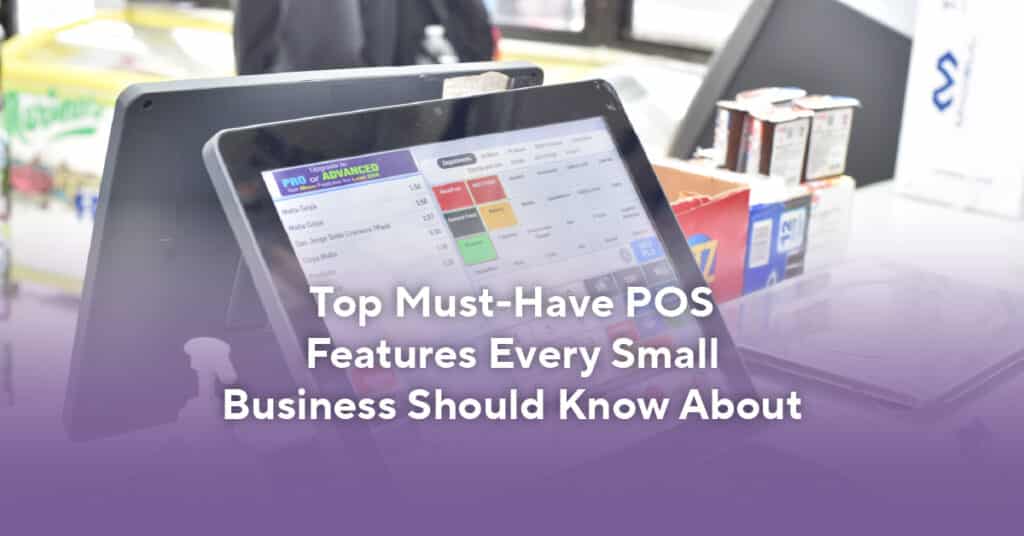In the US, payroll errors, such as delayed or incorrect payments, are common, primarily due to manual processing. With an automated payroll system, you’re less likely to experience such issues. That’s because the software reduces calculation errors and makes payments faster.
The system also manages the entire process, from collecting employees’ bank details to calculating gross pay, filing taxes, and making timely deposits. It does this while saving time and minimizing operational and legal risks. Once you incorporate an automated payroll service, you can expect to have your payment policies and tax obligations under control.
What Is an Automated Payroll System?
Many customers have asked, “What is an automated payroll system?” It’s software that handles payment tasks with minimal human intervention. Your boss or payroll officer can utilize this system to process wages and file income taxes for employees.
How It Works
An automated payroll system works in several ways:
| Task | Data involved |
| Collects employee data | Hours worked, pay rates, bank details, and tax withholding information |
| Calculates the gross pay minus taxes and other deductions | Other withholdings could be retirement contributions, paid time off (PTO), loan payments, or medical insurance |
| Calculates net payments | Tabulates what employees get |
| Builds a payment record with employee details, corresponding pay period, and other information | Payslip or invoice |
After these steps, the system delivers a payslip to each employee via email or a dedicated website.
Key Features of Modern Payroll Systems
A modern automated payroll system often includes more advanced features than earlier versions. Some core features are:
Self-Service Portal
If you wonder how an automated payroll system collects employee information, the self-service portal is one such medium. It’s usually a website where employees can view and manage their information. These can include employment history, age, and bank information.
It syncs data from the site for processing, easing the administrative workload.
Time and Attendance Tracking
The software connects with time-tracking tools to automatically import work hours. This helps ensure that hourly, weekly, or monthly salaries remain accurate.
Automated Tax and Compliance Management
An automatic payroll solution also helps estimate and withhold tax deductions based on federal, state, and local laws. It completes and files all required tax forms, which is helpful in staying compliant and avoiding penalties.
Advanced Reporting and Analysis
Modern payroll software generally contains real-time dashboards displaying labor and payroll expenses, as well as other relevant metrics. As a business owner, you can use this data to make practical budgetary and financial estimates that’ll keep the enterprise running in the long run.
Direct Deposits
Another feature of an integrated automated payroll system for businesses is the ability to send payments directly to an employee’s bank account. The system keeps the bank’s routing number and account numbers of your employees through the self-service portal or deposit authorization form for future payments. The system then transmits relevant information to the employer’s bank for processing before payday.
Security
A new automated payroll system utilizes industry-standard security measures, including SSL data encryption and multi-factor authentication, to protect personal and financial details from unauthorized access. This reduces the possibility of phishing attacks and fictitious entries.
Scalability
Modern payroll systems are designed to change as organizational developments occur, such as updated pay calendars or new taxes. They ensure integration and compliance are effortless.
Differences Between Manual, Semi-Automated, and Fully Automated Payroll
A payroll service comprises three categories: manual, semi-automated, and fully automated. They differ in terms of efficiency, cost, and risk. Here’s an overview of how each works:
Manual Payroll
Here, payments are processed with human intervention. A finance officer tracks hours, calculates payments, applies tax deductions, and then writes and issues checks. Tax forms are also complicated manually.
Pros
- No software subscription costs
- No internet fees
- Total human control
Cons
- Labor-intensive
- Higher susceptibility to errors
- Time-consuming
- Lower data security
Semi-Automated Payroll
A semi-automated payroll system takes the hybrid approach by combining human and technological inputs. In this case, you may use basic digital tools like a pre-formatted spreadsheet and tax withholding calculators to perform some of the calculations. However, it requires you to enter all data, including hours worked and new hire information, yourself.
You remit and file tax returns in person as well.
Pros
- Less manual effort
- Saves time
- Lowers cost
- Less errors
Cons
- Risk of data entry errors
- Limited reporting
- No real-time tax compliance
Fully Automated Payroll
It covers nearly all payroll activities and performs them with minimal intervention. A fully automated payroll system works side by side with other applications, such as time-tracking, to perform all payment and tax reporting activities. All the business owner has to do is verify the completed activity for accuracy and vet the final run.
Pros
- Increased administrative convenience
- Saves more time
- Improved accuracy
- Better scalability for growing businesses
Cons
- Higher initial expense
- Frequent employee training
Why Compliance in Payroll Matters
In most companies, payroll compliance involves following labor and tax laws. These regulations dictate how employees are compensated and taxes filed. It’s your ethical and legal obligation to ensure all tax and payment obligations are fulfilled.
Ignoring or violating these laws may have severe implications, including:
Financial Penalties
US government agencies such as the Internal Revenue Service (IRS) can penalize for incorrect tax withholdings, late filing, or false reporting. Over time, such penalties create a substantial financial burden on your business.
Audits
Local tax agencies may audit your payroll system for the following reasons:
- Mismatch in reported payroll expenses and the amount of taxes paid
- When an employee complains about unpaid wages
- High staff turnover
During an audit, payroll registers, tax filings, or pay policies may be requested. These checks can uncover cases of fraud, which may result in criminal charges, fines, or other sanctions.
Litigation Risk
Employees can file a lawsuit over payroll compliance issues such as unpaid overtime or incorrect remuneration. Unequal pay between male and female employees can also be grounds for legal action. These cases have steep legal fees and settlements.
Damage to Reputation
Repeated non-compliance or ongoing litigation will harm your business’s reputation. This can make it more difficult to retain customers and attract quality employees, ultimately preventing future growth.
Benefits of an Automated Payroll System for Compliance
As explained earlier, the importance of a compliant automated payroll system can’t be overemphasized. Here’s how it helps you achieve complete compliance:
1. Automated Tax Calculations
A modern automated payroll processing system contains the latest federal, state, and local tax tables. This means you can rely on it to calculate and withhold income tax amount, FICA (Social Security and Medicare), and other payroll taxes correctly. In this context, the software prevents under- or over-withholding of income taxes.
2. Timely Filing and Payment of Tax
The program also manages the entire tax payment process. It generates and submits all forms required, including W-2s and 1099s. Afterwards, this automated payroll system remits tax amounts to the appropriate tax authorities within the shortest time, reducing the risk of delayed filing.
3. Compliance with Labor Laws
The benefits of an automated payroll system don’t end with tax-related processes. It also supports compliance with federal and state labor laws such as the Fair Labor Standards Act (FLSA). For instance, it can track and calculate overtime compensation to ensure compliance with minimum wage requirements.
4. Proper record-keeping
An automated payroll software for businesses maintains a computer copy of all relevant transactions and tax reports. If an audit is ever done, you can demonstrate compliance by having accurate records in hand, thus simplifying the review process.
Business Advantages of Automated, Compliant Payroll
A compliant and automated payroll system offers a range of benefits for businesses:
Cost Efficiency
When your payroll process complies with labor and tax laws, it reduces the likelihood of legal fees and fines. This may offset some of the costs associated with payroll software, such as subscription fees and internet costs.
Time Saving
The system minimizes the time spent by your cashier or accounting officer to perform calculations manually. You also do not need to research new wage laws or enter employee information manually. An automated payroll solution performs these complex operations better.
Strategic Financial Planning
A compliant payroll solution provides real-time information on labor costs and profits, allowing business leaders to make informed decisions on resource allocation.
For example, some systems can forecast future labor-related expenses, which you can use when considering financial options like:
- What would be the projected cost of hiring a new person?
- How would changes in salary affect total payroll expenses?
- What fraction of future budgets should be allocated to workforce expansion?
In other words, this allows you to take financial implications into consideration before making decisions.
Improved Services
As your company expands, you may hire more employees. A compliant automated payroll system adapts to the increasing number of workers and their shifting compensation needs, resulting in reduced administrative burden.
Workforce and Customer Satisfaction
A well-structured payroll system ensures that employees get paid correctly and on time, which builds confidence and increases morale. Happy employees confidently provide quality service to customers, which can also contribute to a reduction in turnover rates.
Features to Look for in a Payroll System
Understanding how to choose a payroll automation system is a crucial step for every business. With many options available, it can be challenging to select the right fit for your business. If you’ve decided to invest in one, here are the key factors to consider:
- Ease of use → Is the system simple to use? It helps to use free trials first so you can test usability.
- Security → Does the payroll software use SSL encryption, two-factor authentication (2FA), or Transport Layer Security (TLS) encryption?
- Tax compliance features → Can the system manage tax filing and remittance at the federal, state, and local levels?
- Synchronization →Does it integrate seamlessly with other critical tools like accounting and time-tracking software?
- Cost → Is its subscription plan ideal for your business size and available resources?
- Customer support →Does it have reliable and multiple support channels, such as live chat, phone, and email, for urgent inquiries?
Comparing these features gives you a clearer idea about how to choose a payroll automation system that’ll suit your current operational needs and future development plans. You can also try the NRS Purple service to see if the pricing plans and other features align with your budget.
How to Implement an Automated Payroll System in Your Business
It’s one thing to have found the best automated payroll system for your business. But switching over takes a systematic approach. Below are some steps to help you utilize your new software with ease:
Step 1: Audit Your Existing Needs
Before you opt for an automated payroll system integration, consider whether it’s a priority. One way to find out is whether manual payroll overruns on the day of your financial officer. You can also check if there has been a history of inaccurate wages when using the manual approach.
Step 2: Gather Your Data
If a payroll service proves necessary, prepare for transfer. Collect all necessary information, including employees’ full names, social security numbers (SSN), bank details, and tax withholding certificates.
Step 3: Send Your Information
You can now transfer data to the new software. Use migration tools like Google Cloud or enter the details manually if necessary. Afterwards, create a checklist to ensure that all data has been transferred accurately.
Step 4: Try it Out
It’s recommended that you verify all the features of your new automated system so you can fix unexpected issues promptly. You can also check if calculations, deductions, or other payroll processes are compliant.
Step 5: Get Your Team Ready and Go Live
Once the test has been performed, educate everyone who will use the automated payroll system on how to access their information or approve timesheets. This includes the payroll team, human resources (HR) staff, and managers.
Future Trends in Payroll Automation
Payroll systems are increasingly moving toward advanced automation powered by artificial intelligence (AI). Emerging trends point to several key features:
Fraud Detection
AI-driven payroll software can apply pattern recognition to identify irregularities that may escape manual review. For instance, it can detect duplicate payments or flag instances where inactive employees continue receiving pay.
Pay Equity
An automated payroll system can also analyze workforce data across demographic groups or gender to screen out wage disparities. This tool examines patterns, such as bonuses and promotions, to highlight systemic bias. You might use these data-driven insights to review your organization’s pay structure with fairness in mind.
Predictive Analysis
AI-powered payroll software can adapt to changes in the workforce, such as high turnover or heavy hiring, and respond in the same manner. It leverages such changes to forecast the costs of labor and resources needed. It can help you improve budgeting and manpower planning.
In summary, payroll automation is evolving toward AI-based systems. When choosing a payroll automation system, organizations may start prioritizing features such as anomaly detection and predictive modeling to strengthen compliance and efficiency. You can utilize tools like NRS Al Product Recommendations to help you analyze your business data and suggest payroll systems best suited for you.
Conclusion
Now you know that an automated payroll service can help facilitate your staff’s payments more efficiently. You’ve also learned the key features and trends in this system. It comes with:
- High rate of accurate calculations
- Improved financial planning with forecasted budgets
- Wages and tax payment compliance through real-time updates
- Fraud detection
When you manage payments with a comprehensive payroll, you’re not just saving time, effort, and costs. You’re also building a sustainable brand image while treating workers fairly. For personalized solutions on payroll automation, complete the NRS Contact Form today.








